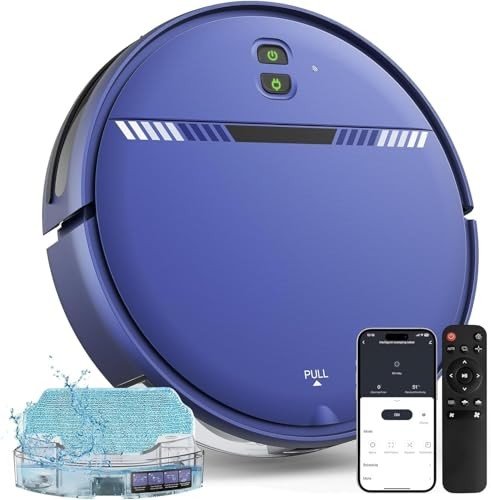Revolutionizing Home Maintenance: The Rise of Cleaning Robots
In an age where innovation continues to influence daily life, cleaning robots have become a substantial innovation in the field of domestic cleaning. cheap robot vacuum working machines have redefined how families handle cleaning tasks, providing benefit and performance. With their capability to navigate areas, avoid obstacles, and operate on pre-set schedules, cleaning robots are ending up being essential tools for homeowners wanting to optimize both their time and their living environment.
The Evolution of Cleaning Robots
Cleaning robots have actually gone through an incredible improvement considering that their inception. What began as basic makers has actually advanced into advanced devices geared up with innovative features. Below is a table highlighting some crucial turning points in the advancement of cleaning robots.
| Year | Turning point | Description |
|---|---|---|
| 1996 | First Commercial Robot | The first robotic vacuum, Electrolux's Trilobite, was introduced. |
| 2002 | Roomba Launch | iRobot launched the Roomba, making robotic vacuum popular. |
| 2004 | Mapping Technology Introduced | iRobot presented smarter navigation abilities, permitting for better cleaning paths. |
| 2012 | Smart device Integration | The intro of mobile app control allowed users to control robots from another location. |
| 2020 | Advanced Sensors & & AI | Robots began using AI for improved mapping and things recognition. |
Kinds Of Cleaning Robots
As technology has actually advanced, numerous kinds of cleaning robots have emerged, each developed to accommodate different cleaning requirements. A few of these include:
Robotic Vacuums
- Designed to autonomously vacuum floors, they typically include sensors to navigate around spaces and go back to their charging stations.
Robotic Mops
- These robots are equipped with mopping performance, utilizing water or cleaning options to scrub floorings.
Window Cleaning Robots
- Specifically crafted for window cleaning, these devices can climb vertical surface areas utilizing suction or magnetic systems.
Pool Cleaning Robots
- Developed for in-ground swimming pools, these robots collect debris and even scrub the walls of the swimming pool efficiently.
Multi-tasking Robots
- Some contemporary cleaning robots integrate vacuuming and mopping capabilities, using versatile cleaning options.
How Cleaning Robots Work
The core performance of cleaning robots is focused around their capability to navigate homes autonomously while carrying out cleaning jobs. Here's a breakdown of the fundamental parts that enable them to carry out efficiently:
- Sensors: Most cleaning robots are geared up with sensors that help them spot barriers, slopes, and edges, avoiding falls and collisions.
- Navigation Technology: Many robots use a combination of gyroscopes, accelerometers, and sometimes cameras or LIDAR for navigation. This enables them to map their environment and clean efficiently without missing out on areas.
- Source of power: Most cleaning robots operate on rechargeable batteries, with numerous efficient in going back to their charging docks when their power runs low.
- Cleaning Mechanisms: Whether through suction for vacuuming or turning brushes for mopping, cleaning robots feature different systems customized for efficient dirt elimination.
Advantages of Cleaning Robots
The incorporation of cleaning robots in households provides several advantages:
- Time-Saving: Cleaning robots can run on their own, enabling house owners to engage in other activities.
- Constant Cleaning: With set up cleaning times, these robots ensure consistent maintenance of the home.
- Hard-to-Reach Areas: Cleaning robots can access narrow areas and corners that standard cleaning tools may deal with.
- Decreased Allergens: Regular cleaning helps decrease dust and allergens, contributing to a healthier living environment.
Limitations of Cleaning Robots
In spite of their numerous advantages, cleaning robots also present certain limitations that users must consider:
- High Initial Cost: While the price of cleaning robots has reduced in time, some sophisticated models can be fairly pricey.
- Irregular Performance: Not all robots perform similarly; some may battle with specific surfaces or dirt types, leading to unsatisfactory outcomes.
- Restricted Capacity: Many robotic vacuums have smaller sized dustbin capabilities, needing more frequent emptying than standard vacuum.
Frequently Asked Questions about Cleaning Robots
Q: Are cleaning robots worth the investment?A: Cleaning robots can be
a worthwhile investment for those looking for time-saving services. They can considerably reduce the cleaning problem, especially for hectic households. Q: Can cleaning robots be programmed?A: Yes, lots of cleaning robots come with programmable schedules and modes, permitting users to set specific cleaning times and areas. Q: How do I maintain my cleaning robot?A: Regular maintenance involves cleaning the brushes, clearing the dustbin, and occasionally looking for software application updates. Q: Are cleaning robots efficient on all surfaces?A: Most robotic vacuums work on tough floorings and low-pile carpets. Nevertheless, efficiency may
vary on thick carpets or particular kinds of rugs. Q: Do cleaning robots work well under furniture?A: Cleaning robots are designed to fit under a lot of furnishings; nevertheless, the effectiveness can depend upon the height of the furnishings.
Cleaning robots represent a breakthrough in the realm of
domestic chores, offering a mix of innovation, convenience, and performance. While they are not a total replacement for traditional
cleaning approaches, they significantly boost housekeeping abilities. As developments continue, future iterations of these gadgets are expected to end up being a lot more intelligent, efficient, and easy to use, further incorporating into the smart homes of tomorrow. The contemporary homeowner thus deals with an interesting future where cleaning robots might take much of the drudgery out of home upkeep, enabling for a cleaner home with very little effort.

